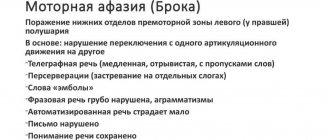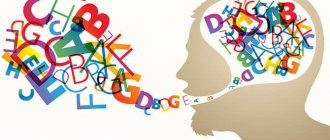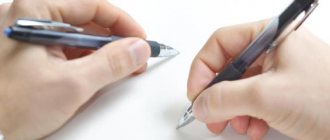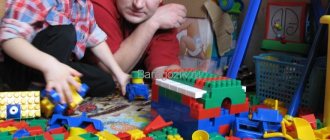Peculiarities
Motor aphasia is brain damage in Broca's area, which is characterized by irreversible organic changes in brain tissue with a complete loss of its functional activity in this area. Experts distinguish two main clinically significant forms of motor aphasia: afferent and efferent motor aphasia. With this disease, there is a disruption of the synthetic activity of the brain with loss of speech function, together with its perception. In this case, the patient has no situational speech, i.e. the patient cannot maintain a dialogue because he simply does not perceive it.
Afferent motor aphasia
Afferent or kinesthetic aphasia is manifested by difficulty in reproducing speech, mainly due to problems in the articulatory apparatus. Thus, patients with afferent motor aphasia cannot and cannot connect their own speech into a complete structured sentence.
Patients often try to replace words that they cannot pronounce with synonyms, which leads to a significant slowdown in spoken speech. The difficulty in pronouncing consonant sounds also attracts attention.
In most cases, afferent motor aphasia is combined with agraphia, a writing disorder.
Efferent motor aphasia
It occurs as a result of damage to the premotor areas of the cerebral cortex. Efferent motor aphasia manifests itself by literally jamming the patient’s speech on specific sounds. The patient cannot change the position of the articulatory apparatus, which leads to large time pauses between pronounced sounds. Speech becomes telegraphic or stamped.
It is worth noting that in almost half of all cases of identified motor aphasia in patients, a combination of both afferent and efferent aphasia occurs. Mixed aphasia is manifested by a complex manifestation of all of the above manifestations, which is called the term sensorimotor speech disorder.
Sensory aphasia
Acoustic-gnostic (sensory) aphasia
occurs when the superior temporal gyrus is damaged.
A distinctive symptom of sensory aphasia is a lack of listening comprehension of the speech
of others.
Not only phonemic hearing is lost, but also the ability to distinguish voice timbre, intonation, and differentiate non-speech sounds: the sound of water, the creaking of a door, etc. Writing is grossly impaired, acalculation is observed - inability to count.
In patients with sensory aphasia, as a rule, motor function is not impaired, and the lack of self-control of speech leads to the fact that they do not immediately realize their illness, so they become mobile and talkative.
The understanding of the meaning of words also changes; names with different meanings are perceived equally (cane-guest-nail). When asked to show a barrel in the picture, they point to a kidney. , literal paraphasia
occurs - inappropriate use of sounds in a word or their replacement. Reading remains the most preserved function, since the optical and kinesthetic analyzers are involved.
Causes of afferent motor aphasia
The causes of the formation of motor afferent aphasia are a number of diseases that lead to organic damage to the cerebral cortex, including Broca’s area, as well as the premotor cortex. Most often, afferent aphasia is caused by diseases with extensive damage to brain structures, for example:
- Acute cerebrovascular accident or stroke. Moreover, a stroke is hemorrhagic in nature, in which massive hemorrhage occurs in the structures of the brain. Blood soaking and compression of the posterior regions of the frontal zone leads to damage to Broca's center and the development of afferent motor aphasia;
- Infectious and inflammatory diseases of the brain. Most often these include encephalitis or leukoencephalitis. Inflammatory diseases lead to softening of brain tissue and the formation of abscess cavities;
- Traumatic brain injuries, especially with severe brain contusion and subarachnoid hemorrhage. Brain contusion and edema lead to compression of brain structures, which can also damage Broca’s center;
- Development of a tumor process localized in the frontal or temporal lobes on the side of the dominant hemisphere;
- Epilepsy, in the presence of an epileptogenic focus in close anatomical proximity to the speech center of the brain;
- Toxic damage to brain structures, for example, from heavy metals or other poisons.
A number of chronic diseases also contribute to the development of afferent motor aphasia:
- Chronic pathology of blood circulation, due to the presence of an aneurysm or atherosclerotic changes in the vascular wall of the cerebral arteries.
- Slowly progressive diseases of the central nervous system: multiple sclerosis or encephalomyelitis. Demyelination of nerve fibers leads to disruption of afferent and efferent connections of the speech center with other structures of the brain;
- Formation of prion protein.
Acoustic-mnestic aphasia
Cause
acoustic-mnestic aphasia - damage to the middle and posterior parts of the temporal region.
It is characterized by symptoms such as a decrease in auditory-verbal memory
due to inhibition of auditory control. When listening to each new word, the patient loses understanding of the previous one, hence the repeated repetition of the same syllable or word. An aphasic who suffers from the acoustic-mnestic form cannot repeat 3-4 words in a row with different meanings. For example, sky, hand, grass, spoon, repeats either the first or the last word. Phonemic hearing and correct articulation are preserved, which results in verbosity that compensates for communication difficulties. The nominative function of speech, retelling based on plot pictures, suffers. Misunderstanding of the meaning of words leads to verbal paraphasia - substitution of words in a sentence, merging one word into one in writing. Along with writing, counting and reading are impaired.
Up
Symptoms
Afferent aphasia is accompanied by the occurrence of a number of symptoms and syndromes, which form the clinical picture characteristic of this form. Expressive language impairment syndrome includes:
- Violation of spatial movements, such as facial expressions and gestures, as well as a complete absence of situational speech process. When trying to repeat sounds, the patient makes only isolated movements with his lips and tongue;
- Speech becomes overly clichéd, there are syllable and sound dropouts.
The patient also experiences pronounced difficulties in pronouncing complex syllables, namely: they divide words into parts and skip the most complex sounds. There is a violation of the understanding of someone else's speech, however, this period does not last long from a day to several days and occurs after suffering an acute cerebrovascular accident.
The victim’s spatial disorientation, as well as impairment of writing and perception of visual text information, are also noteworthy. When writing, the patient shifts vowels, omits consonants, and changes the order of letters.
Semantic aphasia
Semantic aphasia occurs when the parieto-occipital region of the dominant hemisphere is damaged. The patient has difficulty finding the right word when naming objects; instead of a noun, they may say a verb or an adjective that describes the properties or functions of this object. Replace a word with a whole phrase (verbal paraphasia). For example, instead of the word chair they say white sit. They lose their understanding of proverbs, metaphors, and catchphrases, and form lexical and grammatical structures incorrectly. With limited vocabulary, articulation is preserved. Written speech is characterized by agrammatism, stereotypical phrases, the absence of complex sentences and a reduced number of adjectives.
Diagnostics
The diagnostic search is aimed at identifying the underlying disease or cause that served as the impetus for the development of motor afferent aphasia. The diagnostic plan includes a standard set of studies. The first step is to collect an anamnesis of the disease, after which a topical diagnosis is carried out to determine the expected extent of damage to brain tissue, then a preliminary diagnosis is made.
To clarify it, a number of instrumental studies are carried out, such as:
- Magnetic resonance imaging of the brain, and contrast can also be used to improve brain imaging characteristics. Magnetic resonance imaging allows you to identify oncological lesions, the presence and volume of a hematoma in traumatic brain injury;
- Angiography of cerebral arteries for the presence or absence of vascular pathology;
- Ultrasound Doppler examination of neck vessels;
- Lumbar puncture if there is suspicion of encephalitis, meningitis or leukoencephalitis;
- Electroencephalography to exclude pathology of an epileptiform nature or oncological lesions of the brain.
The Clinical Brain Institute is focused on studying, diagnosing and treating patients with neurological symptoms, including patients with motor aphasia. The Clinical Institute of the Brain operates a powerful and modern diagnostic department, which makes it possible to make correct diagnoses with a high degree of probability.
Treatment
The main treatment should be aimed at eliminating the underlying cause that led to the formation of afferent motor aphasia. Depending on the underlying pathology, treatment tactics will differ significantly.
- In the presence of a tumor process, surgical intervention on the brain or a course of radiation and chemotherapy.
- In the presence of an infectious focus or abscess, drainage in combination with antibacterial therapy and the use of general stabilizing drugs.
- In case of acute cerebrovascular accident - a course of treatment with drugs with nootropic effects, antioxidants, angioprotectors. For hemorrhagic stroke with severe compression of the brain - surgical treatment.
- For epilepsy, the main therapy is aimed at the use of anticonvulsants.
- For demyelinating and degenerative processes in nervous tissue, glucocorticosteroids are used.
All of the above treatment regimens will be effective in the treatment of aphasia, as they have a pathogenetic mechanism for correcting the pathological manifestations of the disease.
Article:
Treatment of aphasia - restoration of speech in patients who have lost speech, its methods were initially borrowed from the experience of teaching the deaf and mute (deaf pedagogy) and methods of working with children suffering from peripheral speech disorders. Later, special speech therapy techniques were developed for patients with aphasia. Although today, relatives of patients who have suffered a stroke often do not know how to restore speech, and there is no speech therapist in the hospital. It is impossible to put speech restoration on hold; in six months it will be too late. You should definitely find a speech therapist at the nearest Speech Correction Center, consult with him and immediately after discharge from the hospital, begin classes, using some techniques at home on your own. Left-handed or right-handed? After making a diagnosis, before starting rehabilitation work, it is very important to know which hemisphere of the patient’s brain is dominant. In other words, is he left-handed or right-handed, since the left hemisphere is dominant in speech and other mental activities in right-handers, and the right in left-handers. According to statistics, only 40-42% of the population are absolute right-handers, 5-8% are absolute left-handers. The remaining 50% are retrained from the left hand to the right or hidden left-handers. It often happens that in retrained left-handers, aphasia goes away spontaneously within 2-7 days. When the right hemisphere is damaged in left-handers, aphasia is less pronounced, since the functions of the affected areas are compensated by the high capabilities of the left hemisphere. Speech disorders in latent left-handers with damage to the left hemisphere manifest themselves most severely, since when relearning from the left hand to the right, additional speech zones are formed in the left hemisphere in the premotor and temporal lobes. So, to determine whether a patient is left-handed or right-handed, you need to pass the following test. Tests to determine left-handedness or right-handedness (right-handedness/left-handedness) Determine the dominant eye. The patient is asked to look through a kaleidoscope or telescope (to which eye he brings the left or right one first). Interlocking of fingers: upper position of the thumb (left, right). Cross your arms over your chest: “Napoleon pose”, which hand is on top - left, right. Determination of the size of the thumb nail. On which arm (left, right) is the venous system more developed? Determine which hand is 1-2 mm longer. Observe which leg is dominant in the sport. Which hand holds a pen, fork, spoon, brushes teeth, shoes. Which hand combs the hair, which side is the parting on the head. Which hand washes, digs, screws, cuts paper, cuts nails, unlocks a door, hammers nails, saws, etc. Which hand is more comfortable to play a musical instrument? The patient's closest relatives should answer these questions to the doctor. The test can determine not only the leading hand (more than half of the answers), but also hidden left-handedness, if a left-handed type of reaction is detected in three or more questions. Typically, left-handed aphasics have better prospects for speech restoration than right-handers, since the functions of the right hemisphere remain largely intact. When the parietal and temporal lobes of the left hemisphere are damaged, speech restoration occurs based on the planning function of the frontal lobe of the left hemisphere, which allows the patient to gain motivation to learn. Difficulties in restoring speech in left-handers arise only with acoustic-mnestic and semantic aphasia. In left-handed people, dynamic aphasia practically does not manifest itself due to the high interchangeability of the functions of the posterior frontal parts of the brain. Methods of correction work for aphasia The same teaching methods are used for left-handers and right-handers. The main principle of speech restoration is to use the compensatory capabilities of the undamaged area of the brain. The duration of speech therapy sessions for all forms of aphasia is two to three years (in the hospital, then at home), but the patient should not be told about this. After examining the patient, the neurologist determines the form of aphasia. Corrective and rehabilitation work with a speech therapist begins with permission and under the supervision of the attending physician from the first weeks after a stroke or injury. In the early stages, the duration of classes should not exceed 15 minutes twice a week. In the later stages it lasts 30-40 minutes three times a day. The first stage is the same for all types of aphasia: speech disinhibition. They talk to the patient, observe his auditory perception, answers to questions, and understanding of speech. Further work is carried out depending on the form of the disease on all aspects of speech. Speech correction for sensory aphasia The main task for acoustic-gnostic (sensory) aphasia is the restoration of phonemic perception and understanding of simple speech instructions (for example, raise your hand). Using intact analyzers (visual, motor), non-speech forms of work are used: copying short words from pictures, gestures. Exercises Work on restoring phonemic hearing (special exercises) is carried out using plot pictures labeled below. First, two words of contrasting length are taken, for example, car and house. “Show me where the car is and where the house is.” The patient correlates the sound image with the letter image. At the same time, work is underway to perceive the sound of words during the process of copying. Then pictures are taken with words of the same syllable structure, but different in sound (na-sos, zabor). At the third stage, words with the same syllable structure and different sounding first (mak-rak) or last sounds (les-lion) are taken, and the patient is asked to choose a picture with a word that begins or ends with one sound or another. Then he is asked to fill in the missing letters in the words. The work on restoring sounds lasts 2-3 months, then the skills are consolidated in speech, restoring the subject attribution of the word. For example, select all the wooden objects, all the clothes or shoes in the picture. In addition, the ability to read analytically and globally is restored. Work is underway to understand the semantics of words by selecting definitions for words, differentiating homonyms, homographs, homophones, selecting antonyms and synonyms for words. An effective technique for sensory aphasia is copying a text, which gives the patient the opportunity to find the right word in his mind, coordinating it with others. At the same time, reading restoration is underway. Work with acoustic-mnestic aphasia In the case when the patient has impaired auditory-verbal memory, treatment (corrective work) is carried out based on visual ideas about the signs of the object. Exercises At the first stage, they work to restore the subject attribution of words. They show the patient pictures of objects and ask them to arrange the captions for them or select the desired one from the list of objects. For example, “an ambulance arrived...”; “I went to the grocery store...”, etc. They explain the functional purpose of the objects and ask them to choose from a variety of pictures those that best suit the situation, for example, a family having lunch or a walk in the forest. In parallel with this, auditory dictations of two or three words are carried out based on plot pictures. We are working on a body diagram: show the body parts in yourself and in the picture according to the instructions. At the second stage, they work on restoring situationally determined speech. The patient follows the instructions, points to the named object, fills out a questionnaire, and conducts a situational conversation. Subsequently, the patient is asked to repeat a series of words or automated series, for example, count to 10, identify and complete the missing element of an object, for example, the spout of a teapot, etc. Work is also underway to understand the polysemy of words, select synonyms, antonyms, homonyms, compose a story based on plot pictures, and retell the listened text. Preservation of phonemic hearing and understanding of the sound-letter content of a word allows one to compose detailed written statements from the very first days of correctional work, preventing poor vocabulary and agrammatisms. Up Speech correction (treatment) for semantic aphasia The main task of speech therapy work is to eliminate difficulties in selecting names for objects, enriching vocabulary and syntactic structures of statements. Reliance is placed on intact analyzers: vision, auditory-verbal memory, and the planning function of speech. Exercises First of all, work is being done to overcome spatial agnosia: restoring the body diagram, overcoming disturbances in visual-spatial perception, restoring the connection between a word and an object image. Constructive-spatial apraxia is corrected through teaching the sequence of dividing a drawing into certain segments. To understand the names of objects, it is necessary to compare the various properties and functions of a whole group of words, breaking them down into categories: furniture, clothes, dishes, etc. The commonality of words is also determined by their root part (forest, forester, lumberjack), and by suffixal characteristics (table, knife). Work is underway on understanding synonyms, polysemantic words, the figurative meaning of a word, restoring the cause-and-effect relationships of an event, differentiating prepositional-case constructions (“the mother fed her son, who ate?”), composing complex and complex sentences, explaining persistent speech expressions, interpreting proverbs , catching logical and grammatical errors made in the text. To overcome acalculia, the patient is asked to solve logical and mathematical problems, clarify the digit of a number (tens, hundreds), reinforce the concepts of “minus”, “plus”, and solve arithmetic problems. When writing letters in mirrors, the emphasis is on restoring the patient’s orientation in different arrangements of objects (left, right), where to start writing the letter, in which direction it “looks.” Restoring speech in afferent motor aphasia Overcoming speech difficulties in afferent motor aphasia relies on the preservation of visual and acoustic perception. Exercises In the case of a roughly expressed form, work is first carried out to disinhibit speech, to overcome embolophrasia, and to highlight the first articles in words. Before causing a sound, the patient must “read” it from the lips, from the tongue. It is more effective to start work by calling contrasting sounds: a, k, u. For better assimilation, the speech therapist uses diagrams for each sound: a - large circle, y - narrow circle, p - wavy line, etc. After consolidating articulatory skills, they move on to pronouncing a series of sounds and sound-letter analysis of the word in order to avoid rearrangements and replacements of sounds in the word. Used: conjugate speech, the speech therapist together with the patient pronounce words, and then stable expressions; reading automated series; reading and recording dictation of individual sounds; forming words from a split alphabet. Then they move on to the reflected pronunciation of words. With the help of dialogue, they work on situational understanding of speech and call for answers. -Are you hungry? - Yes, yes. -Are you going to eat? - Will. -Will you have soup? - I'll have soup. In addition, work is underway to restore analytical reading and writing. Work with efferent motor aphasia The main task is to restore the kinetic motor program, overcome inertia in switching from one articulatory pattern to another, restore the clarity of oral and written statements. Exercises For this purpose, written tasks are used in which you need to choose the correct sequence of syllables in a word. For example, Le (rtstvo, ka), mo (twa, whether). In case of severe violation of reading and writing, they begin to work on adding syllables from a split alphabet, composing first two and then three syllable words (vo-da, so-ba-ka). For ease of reading, phrases can be translated from horizontal to vertical. Conjugate reading of words with a certain rhythmic structure is practiced. Using the preserved speech planning function, they draw a diagram or plan of a word or phrase that allows them to overcome the difficulties of switching from one syllable to another, perseveration and echolalia. Overcoming agrammatisms is achieved by adding endings, inserting prepositions, and restoring the semantic structure of the word. When restoring expressive speech, the child is given the task to complete the phrase: “I changed the bed sheets...” or to tell why, what item is needed. To develop verbal vocabulary, it is used to draw up some kind of plan or daily routine: “I got up, got dressed, washed...” etc. If reading is completely impaired, then special alphabets with pictures are used: A - watermelon, B - wolf, etc. Restoration of reading is carried out in parallel with sound-letter analysis of words. In the later stages, the patient is advised to solve simple crossword puzzles. Corrective work for dynamic aphasia The main task for this form of aphasia is to restore the programming function of speech. Exercises The patient is recommended to draw up an action plan, a program of statements based on questions, diagrams, according to a series of plot pictures with increasing action. An aphasic must be able to determine the sequence of actions of the hero of the pictures, be able to classify objects using the example of a group of images: furniture, transport, etc. The speech therapist creates conditions for speech activity, conducts role-playing conversations, playing out this or that situation: “The Clothing store is located to the right of the pharmacy and to the left of the grocery store, how can I get from the opposite side of the street first to the pharmacy, and then to the store where I need to buy bread". The patient is also taught to overcome difficulties in understanding the figurative meaning of words, asked to convey the doctor’s request, compose a story on a given topic, and retell the text according to a preliminary plan. Speech activity is also facilitated by discussion of the events of the day, quick switching from one topic to another: what happened the day before, what will happen tomorrow. In parallel, written work is being carried out to restore missing parts of speech in the text and correct use of prefixed verbs. At the final stage, an essay is written based on a series of pictures, statements, powers of attorney, and letters to friends are drawn up.
Rehabilitation
It is very important that the treatment is comprehensive and closely related to rehabilitation measures. The Clinical Institute of the Brain is one of the first centers in the country that began the combined use of therapeutic and rehabilitation measures. Rehabilitation consists of:
- Systematic visits to a speech therapist, at least three times a week;
- Dual mode operation, i.e. both with a specialist and independently.
Rehabilitation classes are aimed at restoring articulate speech; for this, patients sing songs and read poetry, since during these classes words are stretched into syllables and train the patient’s articulatory apparatus. Separately, it is worth mentioning the restoration of writing; for this, patients write letters under dictation.
For a more effective and quick recovery of the patient, it is necessary to involve close relatives and friends in treatment. The patient should not be allowed to remain and be in social isolation for a long time.
At the Clinical Institute of the Brain, there is a specialist aphysiologist who develops individual programs for each individual patient to restore speech and writing function in cases of severe cognitive disorders.
Adviсe
Aphasia is not a mental illness, even if there are severe speech impairments. It is worth treating the patient with understanding and patience. You should not raise your voice at the patient, as this will not improve the understanding of the information and the meaning of what is being said. You should speak to the patient as slowly as possible, without using complex structures in sentences. Gestures should also be limited. Use questions that can be answered with a clear yes or no.
To improve the perception of information by patients, try to exclude all extraneous noise. Try not to limit the patient’s communication and ask him more questions.
Dynamic aphasia
Dynamic aphasia
is marked by damage to the posterior frontal parts of the dominant hemisphere, which are responsible for planning and regulating speech activity.
Consequently, difficulty arises when constructing a detailed statement, and in severe cases, its complete impossibility. At the same time, the patient correctly pronounces individual sounds, words and short sentences, since there are no articulation difficulties. But in situational speech, general aspontaneity
,
echolalia and echopraxia
, when an aphasic person repeats after a person not only words, but also lip movements. Violation of internal speech planning leads to primitiveness of syntactic structures, the presence of agrammatisms and speech patterns, and difficulties in retelling. Reading and writing functions are intact.
Prevention of afferent and efferent motor aphasia
There is no specific prevention for the development of aphasia. All preventive measures are primarily aimed at eliminating risk factors that increase the risk of vascular diseases. Since acute cerebrovascular accident is the most common cause of aphasia, stroke prevention has an indirect effect on the development of aphasia.
Timely treatment of arterial hypertension, correction of the blood lipid profile, as well as annual preventive examinations will help to avoid extensive brain damage.
As with any other disease, prevention implies:
- Maintaining a healthy lifestyle;
- Proper nutrition;
- Normalization of the work-rest regime;
- Rejection of bad habits.






